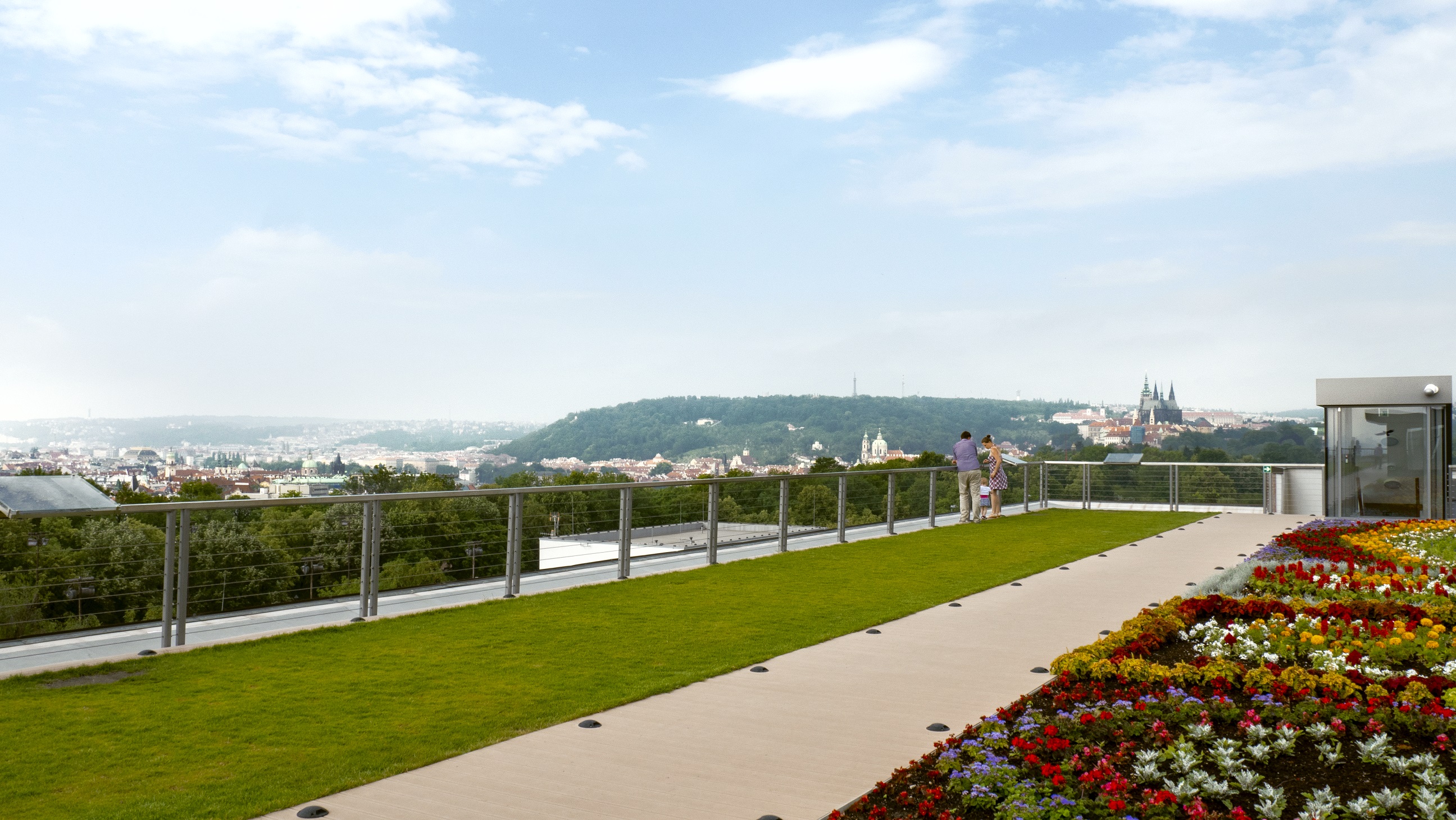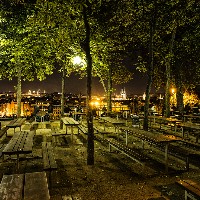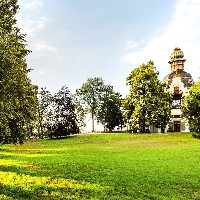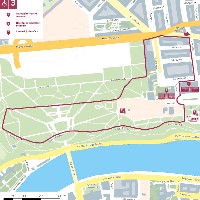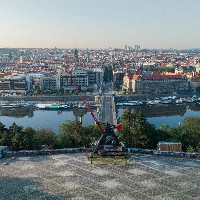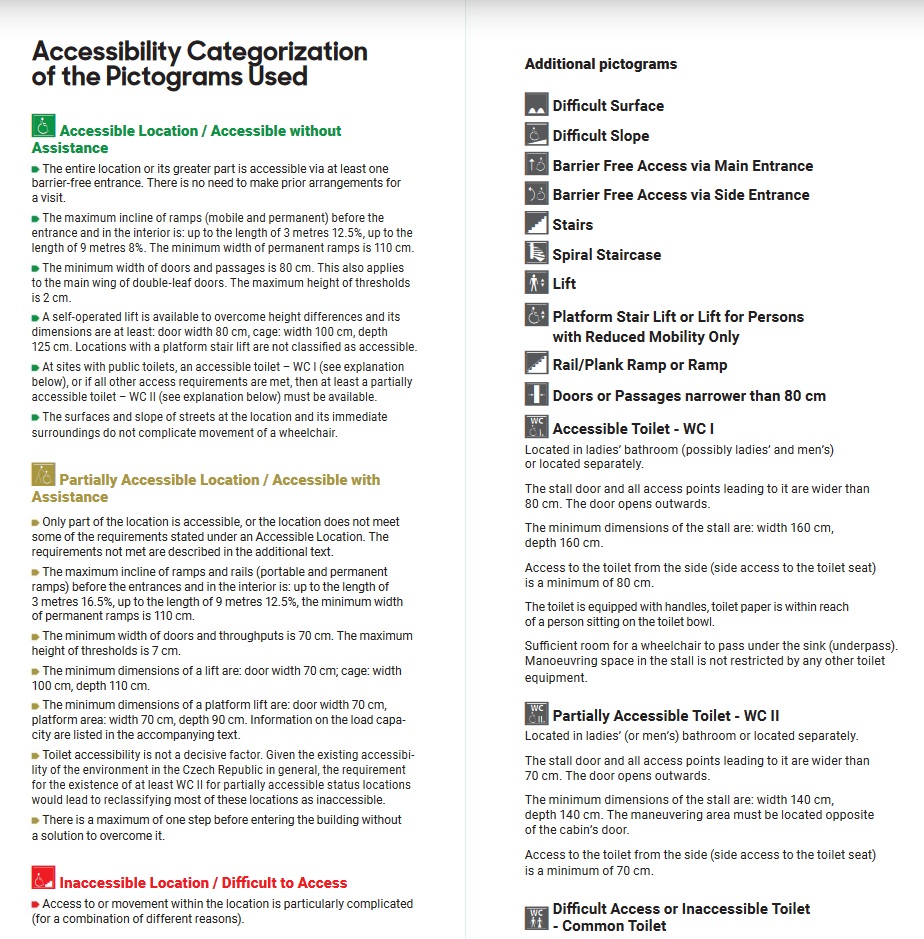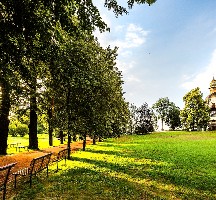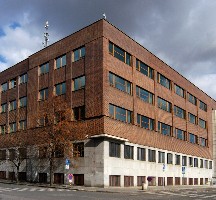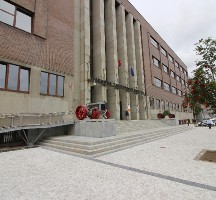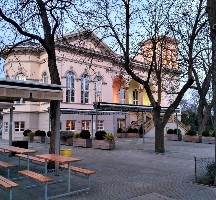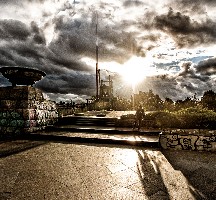Breadcrumbs navigation
Letná: Holding Prague in the palm of your hand
Wheelchair-friendly routes off the beaten track.
- Sports & Relaxation
- walking routes
Practical information
Difficulty Rating: Easy to Moderate
Route Length: 2,9 km
Download: Four Accessible Walks in Prague 2
Even though the Letná plateau spreads out quite high above the Vltava River, the terrain of the route is essentially flat. There are only two places where we encounter inclines and declines – on the route between the National Technical Museum and the Letná Chateau and, second, on the footpath under the Prague Metronome. On wide sidewalks the surface of asphalt and mosaic paving prevails.
ROUTE DESCRIPTION
|→Letenské Square → Ovenecká Street → National Technical Museum and National Museum of Agriculture
Another refreshing walk around a distinct Prague neighbourhood formed by a vast green plain starts at Letenské Square (Letenské náměstí), on the accessible Vienna-style tram stop.
We turn onto Ovenecká Street, which before the Second World War represented a notional backbone of the so-called Letná Montmartre. With the opening of the Academy of Fine Arts at the beginning of the 20th century, situated at the northern end of the street, the neighbourhood began to flourish with sculptors‘ workshops and painters‘ studios. Although most of them have been transformed into luxury apartments, the bohemian atmosphere remains.
Along the façade of the Art Nouveau tenement house called By the City of Prague (U města Prahy) situated on the corner of Milada Horáková Street we head on towards the National Technical Museum. Going along the wide right-hand sidewalk with flat mosaic pavement we can already make out its bluntly angular shapes at the south end of Ovenecká Street.
We cross Letohradská Street using the crosswalk with lowered curbs and follow the rear façade of the museum building to
Muzejní Street, where the smooth asphalt surface changes into rougher mosaic pavement. This little street separates the buildings of the National Technical Museum and the lesser known, but no less interesting National Museum of Agriculture.
Both Functionalist buildings were designed by architect Milan Babuška in the second half of the 1930s and they are almost fully accessible. The floors are connected by lifts and adjusted sanitary facilities for visitors with limited mobility are also available. Exhibitions are smart and playful – definitely worth visiting.
Though the National Museum of Agriculture, in contrast to its neighbour, does not include a café to relax in, it offers a unique lookout post from its spacious, partially grass-covered rooftop terrace easily accessible by lift – the view of the city is superb.
From Kostelní Street opposite the National Technical Museum, about 20-metre-long paved sidewalk rises at a grade of 6% towards Letná Park. Mind the curb at its beginning, which is almost 4 cm high – some personal assistance may be handy at this spot. On our left, we can notice a wooden pavilion with a dodecagon shape, wooden framework and pyramidal roof. The structure is the oldest preserved carousel in Europe, made by the Prague-based master carpenter Matěj Bílek in the last decade of the 19th century.
→ Letná Park → Milady Horákové Street → Letenské Square →|
The part of Letná Park (Letenské sady) that stretches along the horizon from the Letná Chateau to Badeniho Street is naturally flat with two main promenade routes.
Around the Neo-Renaissance Letná Chateau (Letenský zámeček), with its two-storey tower, there is a lively social area with a partially accessible restaurant on the ground floor of the building, a large beer garden and a children‘s playground. The space has a flat, firm surface with alternating mosaic pavement, asphalt and compacted dirt. Here we can stop, get refreshed with the most popular Czech drink, and take in the breathtaking panorama that makes Letná a unique spot.
From the Letná Chateau we set out in the refreshing shade of the full-grown trees along the left promenade route at the end of the Letná plateau, where in several places yet more attractive views of the Vltava River and its bridges, the Old Town and adjacent quarters, and even the modern structures of Pankrác neighbourhood stretch before us on the horizon. The path has a flat asphalt surface without any unpleasant surprises, leading us with just a slight decline to the Metronome. The structure is 25 metres high and weighs 7 tons. The mechanism is hidden in the triangular box – with a range of 60 degrees, the pendulum is balanced by a rocker and a 2-ton weight.
The site where an enormous metronome, designed by Vratislav Karel Novák, ticks away over Prague and where there once stood a monument to the Soviet dictator Stalin, is an almost iconic spot for Prague skateboarders. Here, both beginners and professionals perform their tricks in an atmosphere of camaraderie. Unfortunately, the metronome platform could be approached only by stairs leading up there from all sides, or by a very steep ramp. In the space below, however, many interesting events take place during the summer.
We go on rising slightly to the northwest corner of the park, where we find the Hanavský Pavilion, notable for its decorative Neo-Baroque shapes. It was built as an exhibition space and a promotional site of the Komárov-based ironworks for the Jubilee Exhibition in 1891 and is the fi rst structure made of cast iron and concrete built in Prague. A paved, nearly 100-metre-long sidewalk with a 6% grade leads to it – however, there is another access path twice as steep at the other side (from the Metronome). To enter the pavilion itself we would have to overcome a staircase, but the small terrace in front of it, viewing a large part of Old Town and Lesser Town, counts for one of the most beautiful lookouts from Letná Park.
Whether or not we take the detour to have a look from the pavilion terrace, we turn right and continue to the north. The area by the „Marian“ walls between the bastions of St Mary Magdalene and St Thomas are quiet for most part of the year. Every August for the past fi fteen years, however, this area comes alive for two weeks with the new circus festival known as Summer Letná, which hosts top ensembles from around the world. If you plan on attending the event, be sure to book tickets well in advance.
At the crossroads by the Bastion of St Thomas we turn right again and head east along the straight path with an occasionally cracked asphalt surface. This part of the walk will be particularly interesting for kids, who will appreciate the large, creative playground found here. At the adjacent refreshment place Na Baště with its outdoor terrace and partially accessible washhroom, the whole family can get some rest.
Using the sidewalk alongside the Ministry of the Interior building we reach Milady Horákové Street, where we can cross the traffi c-light controlled crossing with lowered curbs and get back to the start of the walk at Letenské Square.
Recommended Landmarks on the Route
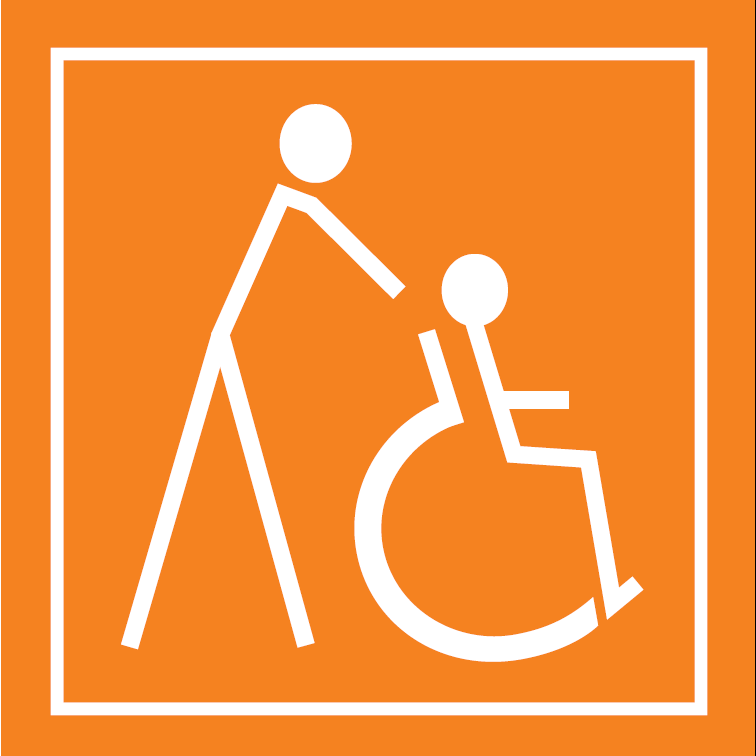 National Technical Museum
National Technical Museum
Kostelní 1320/42, Prague 7, www.ntm.cz

- main entrance is not accessible (3+9 steps)
- side entrance via level -1 (double-leaf door: width 2 x 73 cm)
- access via external three-branch ramp (1st segment 9% slope, length 500 cm; 2nd and 3rd segments 7% slope, length 900 cm, width of all segments 239 cm)
- sufficient manoeuvring room inside
- passages: minimum width of 70 cm
- lift (automatic doors: width 80 cm; cage: width 129 cm, depth 115 cm) connecting level -1 up to level 3
- exhibition space in the mezzanine is accessible by a diagonal staircase lift platform (load capacity 250 kg; dimensions of lift platform: width 80 cm, depth 80 cm) and a vertical lift platform (load capacity 380 kg; dimensions of lift platform: width 110 cm, depth 140 cm)
- accessible toilet on raised ground floor (door width 80 cm; cabin: width 173 cm, depth 172 cm)
- accessible toilet on levels 1–3 (door width 80 cm; cabin: width 193 cm, depth 175 cm)
 National Museum of Agriculture
National Museum of Agriculture
Kostelní 1300/44, Prague 7, www.nzm.cz

- access staircase (3+7 steps) with a four-branch ramp (1st–3rd segments 12% slope, width 150 cm, length 300 cm; 4th segment 10% slope, width 150 cm, length 220 cm)
- access through main entrance (double-leaf door: width 2 x 78 cm)
- second modified entrance from back side of building with vertical lift platform (load capacity 260 kg; door width 96 cm; dimensions of lift platform width 96 cm; dimensions of lift platform 96 cm, depth 140 cm)
- sufficient manoeuvring room inside
- passages: minimum width of 78 cm
- two lifts (automatic doors: width 90 cm; cage width 110 cm, depth 140 cm) connecting the basement and all the floors up to the rooftop terrace
- exhibition space in the 1st floor is accessible by diagonal staircase platform (load capacity 250 kg; dimensions of lift platform: width 80 cm, depth 90 cm)
- accessible toilet on raised ground floor (door: width 89 cm; cabin: width 222 cm, depth 198 cm)
- partially accessible toilet on raised ground floor (door width 90 cm; cabin: width 180 cm, depth 140 cm)
 Letná Chateau
Letná Chateau
Letenské sady 341, Prague 7, www.letenskyzamecek.cz

- access to restaurant on the ground floor (double-leaf door: width 2 x 70 cm; threshold height 4 cm)
- other floors accessible only by a staircase
- passages: minimum width of 70 cm
- partially accessible toilet on ground floor (door width 80 cm; cabin: width 159 cm, depth 144 cm)
- accessible restaurant garden
TOILETS
Public washrooms Na Baště
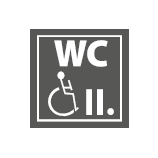
- washrooms at the Na Baště restaurant
- an access walkway of flat stones with significant gaps
- access by main entrance (single-leaf door: width 120 cm) via raised wooden terrace (height 7 cm)
- cramped entryway
- partially accessible toilet cabin (door width 90 cm; cabin: width 157 cm, depth 176 cm)
- space next to toilet bowl is sufficient (width 93 cm)
- toilet bowl equipped with one fixed handrail and one folding handrail
Detailed description on accessibility of marked buildings on the route are available at www.pragueaccessibilitymap.eu.
Contacts
- Letná: Holding Prague in the palm of your hand
- Praza 7 – Letná
Information source: Prague City Tourism
